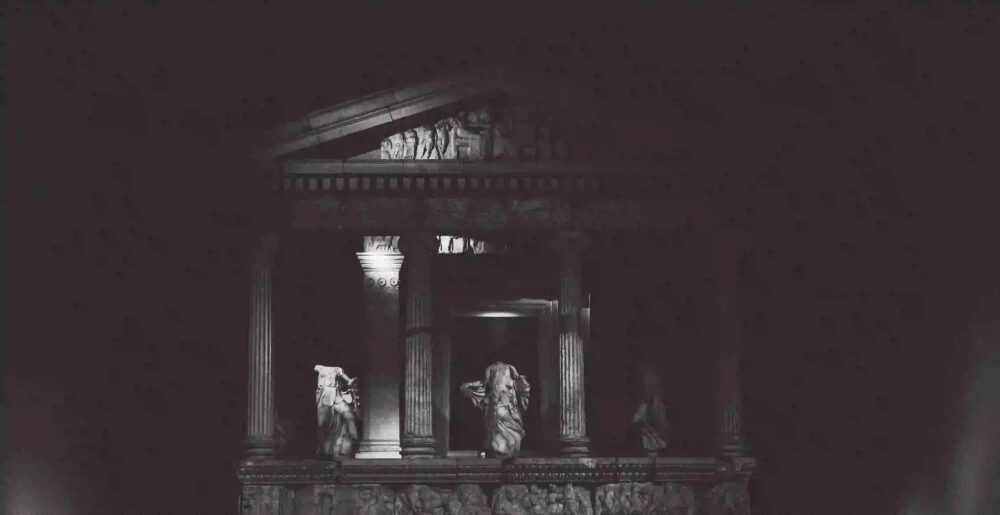In the ancient world, sacrifice played a significant role in religious and mythological practices. From the earliest civilizations to the great empires, sacrificial rituals were performed as a means of communication with the divine. These rituals involved offerings, both tangible and symbolic, and were believed to establish a connection between mortals and gods. In this blog post, we will delve into the intriguing mythology of sacrifice, exploring its rituals, offerings, and the divine exchanges it aimed to achieve.
The Purpose of Sacrifice
Sacrifice, in various forms, was practiced across different cultures and religions. The underlying belief behind these rituals was the idea of reciprocity between humans and gods. It was believed that by offering something valuable to the gods, such as animals, crops, or even human lives, mortals could establish a bond and gain favor from the divine realm. Sacrifice was seen as a means of expressing gratitude, seeking protection, or appeasing the gods in times of crisis or celebration.
Rituals and Ceremonies
Sacrificial rituals were often elaborate and carefully orchestrated. They involved a series of steps and specific procedures to ensure the offerings were acceptable to the gods. These rituals varied greatly, reflecting the cultural, religious, and societal norms of the time. However, they shared common elements, such as purification ceremonies, prayers, and the act of presenting the offering to the gods.
One notable example is the ancient Greek practice of animal sacrifice. These rituals were performed in temples, with priests leading the ceremonies. The animals were carefully selected and adorned with garlands, reflecting the honor and respect bestowed upon them. The participants would gather, and prayers and hymns would be recited before the animal was slain. The blood and specific body parts would be offered to the gods while the rest of the animal would be consumed as a communal meal.
Offerings and Symbols
The offerings made during sacrificial rituals were diverse and meaningful. They ranged from agricultural produce, livestock, and valuable objects to more symbolic offerings, such as incense, flowers, and precious metals. The choice of offering often reflected the desired outcome, with each god having specific preferences and areas of influence.
In Egyptian mythology, for example, offerings of food, drink, and other goods were placed in tombs to provide sustenance and comfort to the deceased in the afterlife. These offerings were believed to ensure the deceased’s well-being and secure their place among the gods.
Divine Exchanges and Symbolism
The act of sacrifice was not merely a one-sided offering; it was believed to create a reciprocal relationship between mortals and gods. The divine exchanges that occurred during these rituals were seen as a form of communication, where mortals expressed their needs, desires, and devotion, and the gods responded with their blessings, protection, or guidance.
For instance, in Norse mythology, Odin, the chief god, sacrificed his eye to gain wisdom and knowledge of the runes. This act of self-sacrifice demonstrated the value placed on acquiring divine insight and the willingness to make personal sacrifices for greater understanding.
Legacy and Modern Interpretations
Although sacrificial rituals are less prevalent today, the mythology and symbolism surrounding sacrifice continue to influence cultural traditions and religious practices. The concept of sacrifice has evolved beyond literal offerings of animals or objects and now encompasses metaphorical acts of selflessness, devotion, and dedication.
In modern times, the idea of sacrifice is often associated with personal growth, perseverance, and the surrender of one’s desires for the greater good. Individuals may make sacrifices in their careers, relationships, or personal lives, guided by the belief that through sacrifice, they can achieve a higher purpose or contribute to a larger cause.
Conclusion
The mythology of sacrifice is a rich and complex tapestry woven throughout the annals of human history. The rituals, offerings, and divine exchanges associated with sacrifice offer a glimpse into the ancient world’s religious practices and beliefs. While the literal act of sacrifice may have diminished, its legacy and symbolism continue to shape our understanding of devotion, reciprocity, and the enduring connection between mortals and the divine.
As we reflect on the mythology of sacrifice, let us appreciate the profound impact these rituals had on ancient civilizations and the enduring lessons they offer us today. Whether through tangible offerings or metaphorical acts of selflessness, sacrifice remains a testament to humanity’s ongoing quest for meaning and connection with the divine.
Note: This blog post is for informational purposes only and does not promote or endorse any specific religious or cultural practices.
